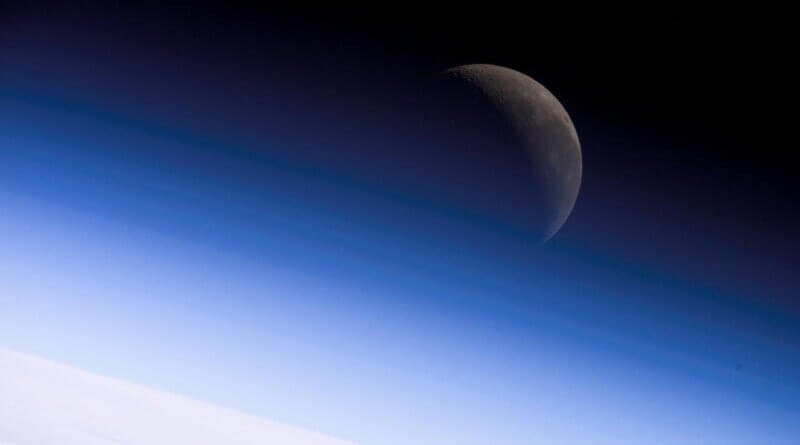Space Is The Place: The Night Sky Over Belper, July 2023
In July, The Night Sky over Belper. Venus is bright but catch it while you can, look out for meteors, Jupiter is an early morning object.
(Headline Image: Crescent Moon Photographed from ISS, courtesy of NASA images).
July Meteors
July will see an increase in meteor sightings. The Delta Aquarids (peaks 30th July), the Alpha Capricornids (peaks 2nd / 3rd August), and the Perseids will produce small numbers of meteors throughout July. Hence, there is a good chance of seeing a bonus meteor or two this month; a prelude to the main event of the summer – the Perseids meteor shower which peaks on the 12th / 13th of August.
The Perseids Meteor Shower (17th July – 24th August)
The Perseids will peak in August, on the nights of August 12 – 13th (Sunday evening into the early hours of Monday). But it is worth looking for them from late July onwards, from around 11.00pm. As always the best views are achieved by being able to see as much of the sky as possible. Any light pollution (or clouds) will spoil your view – so Moonless and clear nights are the best way to see Perseids before the main event in August.
The Moon
3rd of July: Full Moon and a supermoon (the first of four this year)
6th of July: Moon appears to be near to Saturn
12th July (am): Moon appears to be near to Jupiter
19th 20th July: A crescent Moon appears to be near Venus (just after sunset)
The Planets
Venus continues in its magnificence, dominating the evening sky for the moment. However, by the end of the month it will be setting in the early twilight and hence will be lost to observation. Look for Venus in the western part of the sky, just after sunset. On the 19 /20th of July it makes a nice pairing with the crescent Moon.
Mars is in the constellation of Leo this month. Mars appears to be close to the crescent Moon and Venus on the 19 /20th of July.
Jupiter. For early risers, Jupiter takes over the sky in the early morning. It appears to pair with the Moon on the 12th of July.
Saturn. Look to the East after 11.00pm and you may be able to spot Saturn. The Moon appears to be near the planet on the 6th of July.
The International Space Station`
The International Space Station is one of the brightest objects in the night sky. It is not hard to spot and flies-past periodically throughout the year. Typically it will be in the sky for up to four minutes at a time. It moves slowly across the sky, at first bright and then fading as it moves over the horizon. Fly-pasts tend to swing from PM to AM (in July mostly AM – but some sightings around midnight).
NASA’s Spot the Station site gives details of sightings. You may also want to sign up to the Alerts Site – which gives advance warning of the most prominent sightings.

